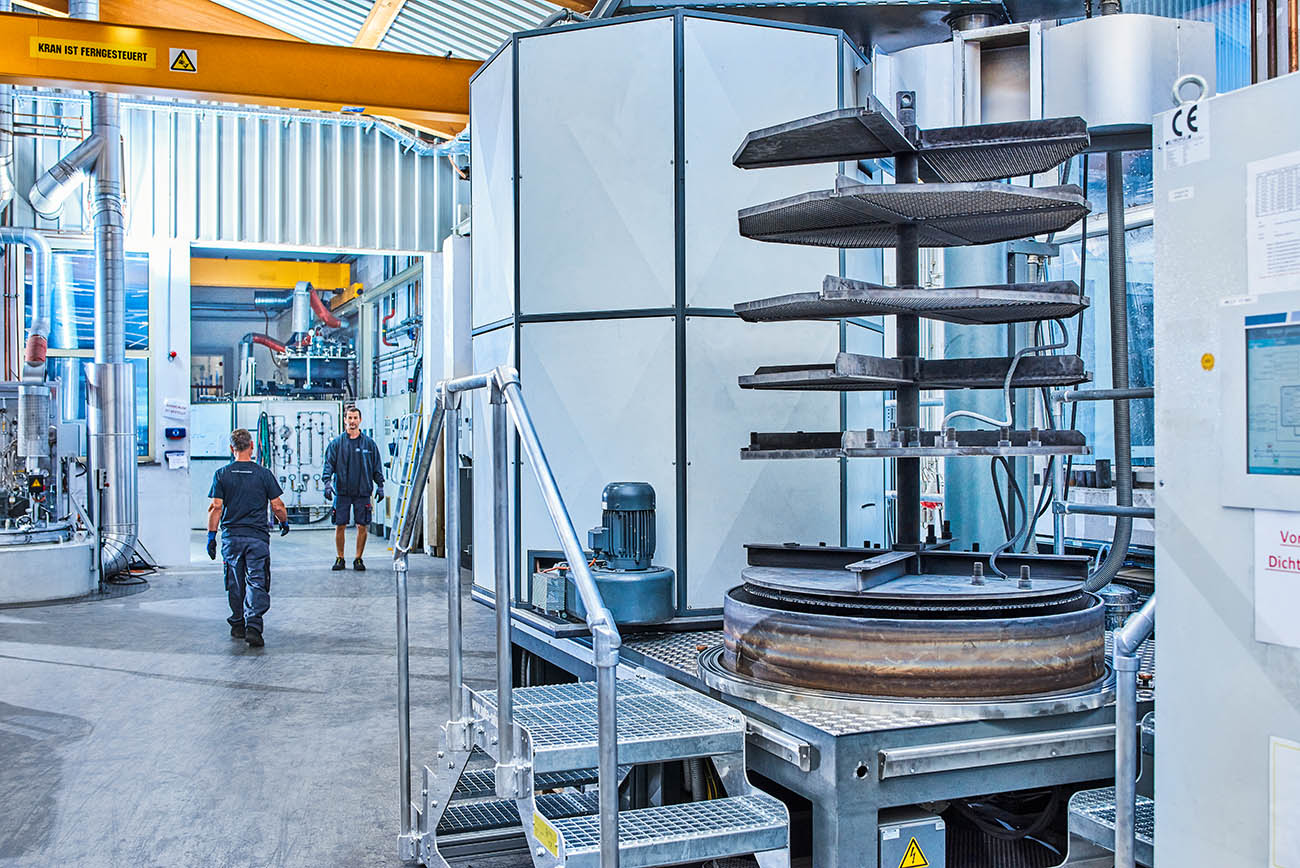
NITRIDING
Plasma nitriding
During plasma nitriding, the surface layer of a workpiece is enriched with nitrogen in an ionised gas atmosphere. The result is clean component surfaces with significantly improved abrasion and wear resistance.

Advantages of the process
No
distortion
Nitriding is the only hardening process in which there is no process-related distortion of the component.
Hardening of
partial areas
Precisely defined areas of the component can be hardened by covering the other surfaces with a protective paste.
Outstanding
component properties
Nitriding produces components with improved corrosion protection as well as high wear and vibration resistance that can withstand the heaviest loads.
None
post-processing
As no distortion occurs during the hardening process, components can generally only be nitrided after completion.
Environmentally friendly hardening without distortion
Plasma nitriding is one of the most environmentally friendly methods of surface hardening due to the fact that no toxic gases are used.
It produces only a fraction of the exhaust gases produced by other hardening processes. Furthermore, the thermochemical process is not only suitable for all ferrous materials, but also for sintered steels with high porosity, cast iron and high-alloy steels.
When plasma nitriding stainless steels, the oxide layer of the component must be broken up in the first process step. This process is called sputtering. A high voltage is then applied between the charge and the furnace wall in the nitrogen-hydrogen gas mixture, which serves as the nitriding medium. The electrically conductive gas is called plasma. Positively charged ions now hit the workpieces, leading to the formation of nitrogen-rich nitrides, which enrich the component surface with nitrogen as they decompose. As virtually no dimensional changes occur, the component is immediately ready for use.

Due to the high energetic effect of the plasma, the process can be carried out at low working temperatures of less than 500°C, making it suitable for materials that are sensitive to distortion.
While the achievable surface hardness essentially depends on the steel grade, the thickness of the layers produced is also influenced by the treatment temperature, the treatment duration and the nitrogen supply in the process gas. Plasma nitriding is preferably used for components that are to have both nitrided and non-nitrided areas, as metal-covered areas can be protected from hardening.
Contact and contact surfaces are therefore not nitrided. For parts that are to be hardened on all sides, holes must be provided for suspended charging. A decisive factor is that no bulk material can be treated in the plasma. The components must therefore be charged individually, with a gap maintained between them.
The most technologically advanced nitriding technology
Plasma nitriding is undisputedly the most advanced nitriding technology. Compared to gas nitriding, the process parameters can be controlled even more precisely. This allows the component surface to be modified very precisely in accordance with the desired properties.
Different nitriding layer structures and hardness profiles can be achieved by varying the gas mixture. Wax-free nitriding is possible with high nitriding hardness depths. The component surfaces are clean and exhibit less roughness than with other nitriding processes.
Key figures

Temperature:
up to 565 °C

Oven size:
Ø 1000 x 1500 mm

Turnaround time:
from 24 h

Nitriding hardness depth:
up to 0,8 mm

Max. loading weight*:
1.500 kg
*per batch for standard sizes and treatments

Request a quote
Request a free and non-binding
offer from us now!
Info!
For the preparation of your individual offer
we need the following information from you:
- Material
- Desired surface hardness (in HV) with tolerance field
- Desired nitriding hardness depth with tolerance field
- Test specification
If a determination of the nitriding hardness depth or compound layer thickness is required, a component must be destroyed.


Do you have any questions?
The HTR team will be happy to advise you!







